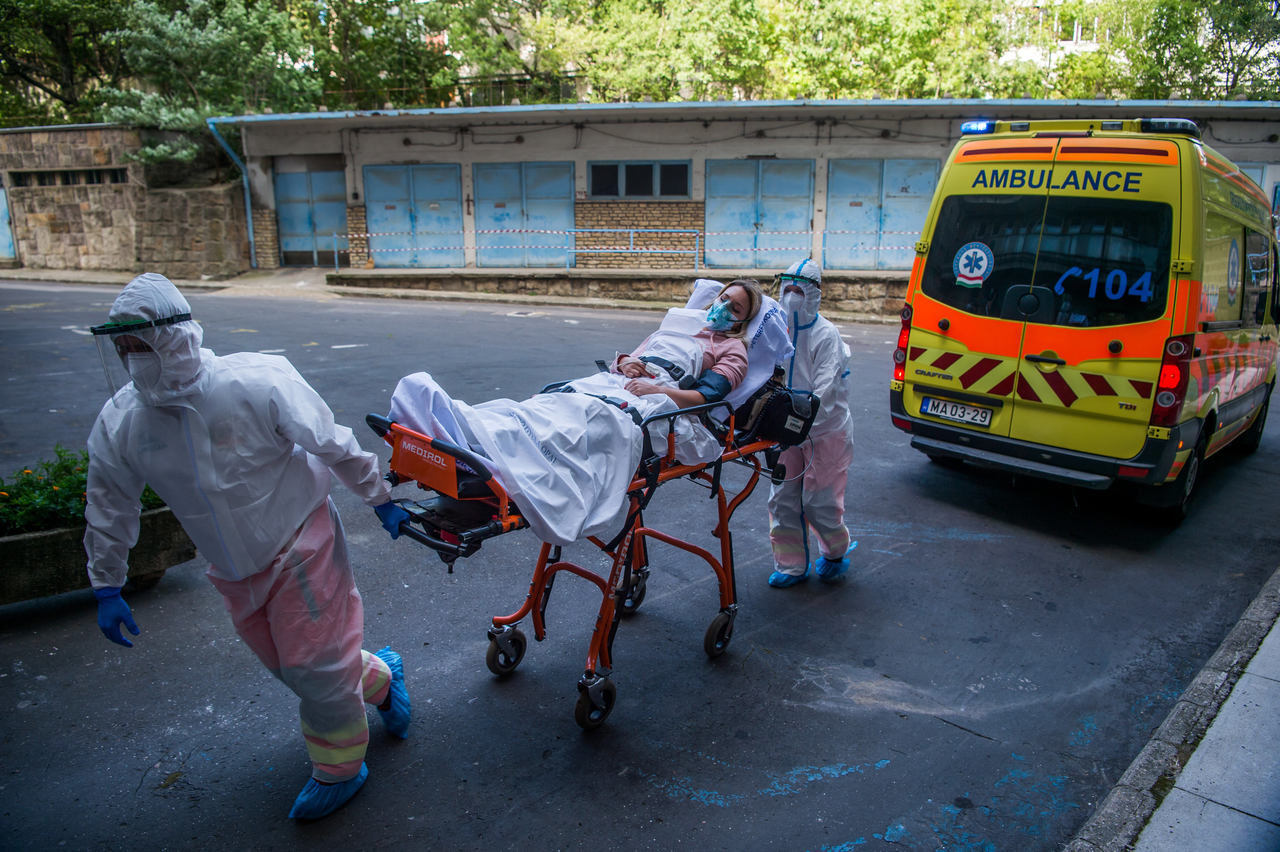Getting tested for COVID-19 proves to be the most complicated in Hungary?
In Hungary, it is rather difficult to access the PCR test for the coronavirus infection. However, many experts are asking and advising the government to expand testing.
Those who do not meet the criteria in the protocol can still get themselves tested, but they do need to pay for it. At the National Public Health Centre, a test costs 30,000 forints (approx. €84), but if someone wants the results faster or wants to be tested on a Saturday, the cost goes up to 45,000 forints (approx. €125). At some private clinics, the price ranges between 25,000 (approx. €70) and 40,000 forints (approx. €110), reported 444.
If there is no visible sign of infection at the workplace, but the employer wants to make sure just in case, the state will not pay the cost of testing. But, of course, this also depends on the person’s income. In Austria, where income conditions are better than in Hungary, the Viennese laboratory offers tests for the same amount of money as the Hungarian National Public Health Centre.
It is significantly easier to take a free test in almost all EU states than it is in Hungary. According to Our World in Data‘s map, only Bulgaria has similar regulations to Hungary, where several criteria and conditions must be met in order to get tested for free. There must be symptoms linked to the coronavirus, such as fever, coughing, dyspnea, loss of smell or taste, or the person’s general practitioner must order the test if they suspect an infection.
But none of the above is enough on their own, at least one of the following must be met as well:
- they have been in a highly infected area,
- they have come into contact with an infected person,
- they need outpatient or inpatient care for anything,
- they are healthcare workers involved in direct patient care,
- they live or work in a residential institution caring for persons at risk.
Therefore, close contacts of coronavirus-infected individuals, for example, are not tested if they are asymptomatic. In their case, a test can be requested “according to the available capacity”, except for employees of health and residential social institutions, who are tested both at the beginning and at the end of quarantine.
In contrast, other countries are trying to shape their regulations so that as many people as possible have access to the tests, to identify those infected as soon as possible, and to quarantine them to break the chain of infection.
For example:
- at the end of July, the French Minister of Health, Olivier Véran, announced that, unlike before, it would be possible to request a PCR test without a prescription and symptoms, and the costs would be paid for by the state. He admitted that there are capacity problems, but 80 per cent of the samples can be analysed within 36 hours. Staffing is scarce, so medical students, nursing staff, and laboratory technicians are also involved, as well as 30 private laboratories around Paris that have been called to help which had not been involved in the work before. A few days ago, in addition to the private laboratories that have been operating so far and are available free of charge, a testing station was set up in each district of Paris, while two more mobile laboratories are touring the city. Sampling in these is also free, even for those who do not have social security. Those who experience suspicious symptoms are advised to call their GP who can immediately make time for them.
- In Germany, it is enough for a test if a doctor sees mild symptoms on their patient. Anyone who came into contact with an infected person is tested without symptoms, and in hotspots, where there are at least 50 infected people out of 100,000 people a week, people can be tested in larger numbers. Those who come to Germany from an area considered to be particularly dangerous for the pandemic are compulsorily tested free of charge. If possible, they will be sampled at the airport, the result of which they will have to wait for in in-house quarantine and, of course, they will still have to stay home if the result comes out positive. Those who come from a non-risky area are not required to test themselves but can do so for free, according to the Ministry of Health’s website, simply because failure to test would cost the state even more money. In several parts of the country, test stations have been set up along motorways close to the border and at railway stations as well. The provincial government has spent €200 million to expand testing. By the end of August, it had been speculated that those coming from the dangerous areas should simply be quarantined because there is no capacity for so many tests. There are also “drive-through” testing stations set up in Germany.
- In the Netherlands, the test is similarly free for those who produce suspicious symptoms. There are places where you can give a sample using the “drive-through” method, sitting in a car so that those who come for sampling do not pass on the infection.
Hungary has a very strict definition of who is entitled to a free test compared to other countries, and there are still hardly any tests taken compared to other European countries.
In recent days, the number of tests being done daily has started to increase in Hungary, which could be promising, but it is unclear whether this is a conscious expansion of testing.
Source: 444.hu




Hungarian government has no interest in making access to tests easier, for more tests would just show more positives thus ruining the fairy-tale of Orban’s brilliant handling of the pandemic.
It is about time that the Hungarian Government DEPORT Hungarophobes like Mario !
He should be sent back to the Middle East (preferably in chains).
The PCR test has been found to create large numbers of false positive results.
In other words, the numbeer of cases is an unreliable number. It is also an irrelevant number.
The vast majority of people are in no danger of this virus. Only the elderly and those with cormorbidities are in danger. Of the 180,000 dead in the US, only 9% died directly from the virus. All the others had medical conditions that were deadly.
It is time to stop the quarantine, restrictions and silly rules that have no basis in science. Protect the elderly and the vulnerable and allow the people to be free again.
Erik Elcrow, if the percentage of young / healthy people who die of an influenza is 9 % of total dead rate, we are not talking of soft influenza. In this case, 9 % is a high percentage. A normal flu hardly kills those without medical conditions.